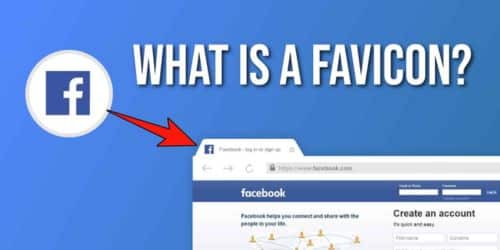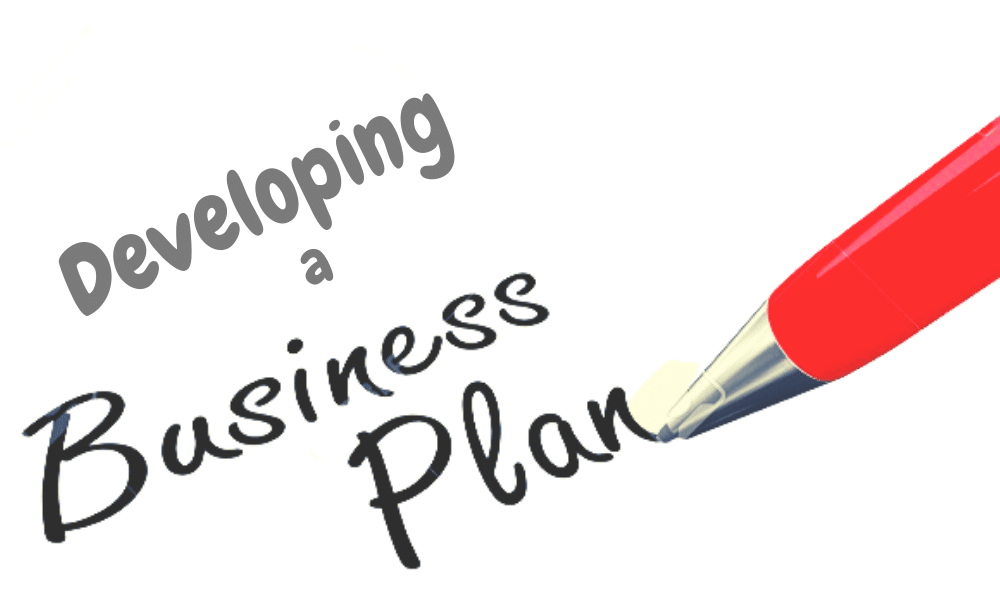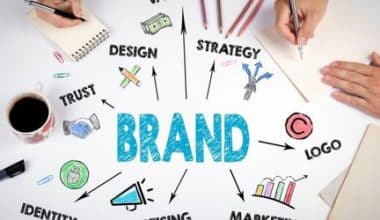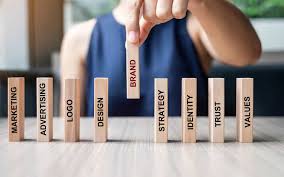Favicons are an important component of digital marketing. They aid in visually identifying your company in the broad internet space. The user experience on your website can be enhanced and brand recognition can be raised by these tiny but potent elements. In this post, you will learn more about what favicon image icon is, including their size, how to create one for your website using a generator, how they affect SEO, and how to add one using HTML.
What is a Favicon?
A favicon is a small 16×16 pixel image icon that serves as branding for your website. Its major objective is to make it simpler for users to find your page when they have several tabs open.
A favicon functions best as a straightforward image or one to three characters of text due to its small size. Favicons and logos are sometimes the same but they should not be confused. The favicon can need to be even smaller or a portion of a company’s original logo due to its small size and low resolution.
Where Can You See the Favicon Image Icon?
The favicon for your website can be located next to any identifying elements. This includes search bars, history results, toolbar apps, bookmarks, and tabs.
Favicons can be found on:
- The search bar.
- Search history.
- Toolbar apps.
- Bookmarks.
- Recommendations for your search bar.
- The drop-down menu of your bookmarks.
By using one, you can make sure that people can quickly recognize your website. These favicons can assist online visitors immediately identify pages they’ve visited.
Why is Favicon Icon Important?
A simple but crucial step in putting up a company website is creating a favicon icon. It gives your website more authority and advances both your internet reputation and the trust of potential customers.
They serve as an initial visual cue for the website, enabling rapid and easy identification for web users and bringing together all the different elements of the browser to create a unified, well-branded surfing experience.
Create Favicon
When creating and designing a favicon icon for your website, there are several factors to consider. Though tiny and simple, it may (and ought to) have a significant impact. Since visitors will associate your brand with your favicon, it is crucial to create the greatest version of this image. To create your favicon image icon, bear the following in mind:
#1. Use space wisely
Sometimes a favicon can’t just be a scaled-down replica of your corporate logo. The entire size of your favicon must be taken into account. You should stick to 16px since all browsers allow it.
#2. Simplicity
Even though your brand’s favicon serves as its logo, you should try to keep your design as straightforward as feasible. The simplest favicons work the best. Due to the favicon’s tiny size and the usage of straightforward designs, colors are essential for drawing attention from potential customers and standing out. The favicon will only appear cluttered and disorganized if there is too much detail.
#3. Brand identity
Your favicon should visually convey to users what your company stands for since it is the visual representation of your brand. This immediately explains to them what your brand is and what it accomplishes.
Try to be inventive, even though it’s difficult to do so with such a tiny and straightforward design.
#4. Abbreviating
Finding the ideal image might not be feasible for what your company does. Using the first letter of your company name or acronyms is a typical fix for this. You could also decide to shorten the name of your business. Try out a few different variations and pick the one that best suits your needs.
#5. Color coordination
The selection of colors should also be considered. Contrasting colors make it simple for the eye to distinguish between shapes and the main feature of your favicon. Because favicons are so few, you must represent your business to the user, and color choice might be important. Remember that every browser differs slightly from one another. Some, for instance, have a grey, black, or white backdrop that will be covered by your favicon.
Favicon Generator
The top favicon generators on the internet are listed below. You just upload your favicon image using the features available for the favicon generator. The image is then converted by the generator software into the appropriate favicon formats and made accessible for download. It won’t take long for this process.
ICO and PNG are the accepted file formats for favicons.
- All browsers, including Internet Explorer, are compatible with ICO.
- Another popular format is PNG. The main drawback is that a PNG file will not be supported by Internet Explorer.
You should ideally be able to get your favicon in both formats from the generator you select.
#1. Favikon
It’s simple to make a favicon in Favikon. To create an icon, just upload an image, crop it, and get it in the ICO or PNG format. Favikon only allows one size, which is 16×16 pixels, which is a drawback.
#2. Favicon.io
You can create a favicon with Favicon.io from scratch, an image, a logo, or an emoji. Before downloading, you can view it in three different sizes. The outcome is available for download in ICO and PNG formats in a variety of sizes.
#3. Favicon.ico & App Icon Generator
You can upload a PNG or JPG image and use this free application to convert it to ICO and PNG formats in a variety of sizes. You’ll save your favicon in the root directory of your website once you’ve generated it in the format you want. The favicon can then be added to your website by creating an HTML link pointing to the file.
This applies to website owners whether they used a development framework like Bootstrap CSS or developed their site from scratch, it’s crucial to note. The procedure will differ significantly whether you utilized a website builder or CMS like WordPress or WordPress alternatives.
Favicon Size
A favicon should be 16×16 pixels in size. They show up that way in address bars, bookmark lists, and browser tabs. Create your favicon in more than one size, ideally. On larger displays, you’ll see versions that are appropriately scaled rather than the stretched-out 16×16 version.
The most popular favicon sizes and their special uses are shown below.
- 16×16: The size of browser favicons.
- 32×32: The size of taskbar shortcut icons.
- 96×96: The size of desktop shortcut icons.
- 180×180: The size of Apple touch icons.
- 300×300: The size required by Squarespace.
- 512×512:The size required by WordPress.
Are Favicons Important for SEO?
Although favicons aren’t directly accountable for your SEO, they are indirectly accountable and a crucial technique for raising your search engine position. Here are a few instances of how using a favicon might improve your SEO:
#1. User-friendly websites lead to increased use
Your website’s usability indirectly raises its search engine ranks. By making your website easy to identify and navigate, a favicon on your browser tabs, bookmarks, history archives, and other places saves your users time and increases the possibility that they will interact with your website.
As a result, more people will visit your website for longer periods, which will increase traffic and boost your SEO.
#2. Bookmarks
You have an advantage over websites without favicons. For websites that have been bookmarked online, the Google Chrome browser takes certain search ranking factors into account. Without a favicon, your website may not have the possibility to be bookmarked on the Chrome browser, which would be one of many indirect signals used to determine search ranking.
Additionally, having your website bookmarked and then visually standing out in that list of bookmarks thanks to your favicon increases the likelihood that users will return to it. All of this improves the SEO and visitors to your website.
#3. Branding and visibility
Users will associate your brand with your favicon because it is a visual representation of your website and company. SEO is all about marketing and branding, and the more visitors can see your website and remember you, the more probable it is that they will click on it.
How to Add a Favicon in HTML
Once your favicon has been produced, you must instruct browsers and other web-based applications where to find it. You must achieve this by including a line of code in the <head> relevant area of your HTML file.
For example, suppose you saved your PNG file as “favicon.ico.” Then, insert the following snippet of code between each of your r <head></head> tags:
<link rel=”icon” type=”image/png” rel=”noopener” target=”_blank” href=”/favicon.png”>
Please take note that while it’s customary, your favicon need not be located in the site’s root directory. Just make sure the href property is correct if you saved it elsewhere. You would type in <rel=”noopener” target=”_blank” href=”images/favicon.png”> if you saved it to the “images” subfolder.
Let’s imagine that you produced various favicon sizes. By including a line of code for each size in the <head> relevant area of your HTML file, you may load all of them on your website.
For instance, you would add the following line of code to create a 16×16, 32×32, 48×48, and 180×180 version:
<link rel=”icon” type=”image/png” sizes=”16×16″ rel=”noopener” target=”_blank” href=”/favicon-16×16.png”>
What Formats Do I Use for a Favicon?
There are now a few other formatting options, as opposed to the previous one when a favicon had to be in the Windows ICO format. Here is a closer look at each of them:
- Windows ICO: The ICO is by far the file type that is most commonly supported. The advantage of the ICO is that it can support various bit depths and resolutions, which functions excellently and is especially helpful for Windows. Additionally, ICO provides a 32-pixel icon for the Windows 7 taskbar that works with Internet Explorer. Additionally, it is the only format that skips the element.
- PNG: There are several uses for the PNG format. A PNG file may be created with no extra software, making it incredibly user-friendly. The shortest file size is provided, and alpha transparency is supported. However, a significant drawback of this design is that Internet Explorer only supports ICO files and will not open PNG files.
- SVG: This format can be used and is supported by Opera browsers.
- GIF: Other than compatibility with older browsers, this format has no advantages. Although they will make users more noticeable, they also have the propensity to annoy, and the overwhelming belief is that they are not at all advantageous.
- JPG: Although JPG can be utilized, it is less popular and does not offer the same level of resolution quality as PNG. The JPEG also loses all of its advantages due to the favicon’s modest size.
- APNG: This is an animated variant of PNG, and while Firefox and Opera may support it, it has the same drawbacks as the animated GIF in terms of detracting viewers from their interface.
How Do I Get a Favicon?
To add a favicon to your website, save the image either in the root directory of your web server or in a new folder named pictures that you create in the root directory. “favicon.ico” is a typical name for a favicon image.
What Is a Favicon Used For?
Enhancing the user experience. A favicon’s main function is to make it easier for users to instantly recognize a page when they have several tabs open in the same browser window. Users can quickly recognize and access your website if you create one with a favicon.
Is A favicon the same as a logo?
Compared to logos, favicons are substantially tiny. As favicons, some companies use a scaled-down version of their logo, however, this isn’t always effective. The majority of logos use images and text, yet favicons are too small to accommodate them.
What is an example of a favicon?
Our favicon is the fancy P that can be seen on the tab to the left of the URL bar on the ProCreator website.
Can I use my logo as a favicon?
Yes. As favicons, most websites often use their logo. You may easily create a logo for your website with the free logo creator if it doesn’t already have one.
What are the rules for favicon?
Guidelines for making fantastic Favicons:
- Ensure simplicity.
- Keep the familiarity.
- Use as little text or lettering as possible.
- Consider the color.
Conclusion
Despite their small size, favicons have a big impact. Favicons are crucial to your company’s success in today’s fast-paced digital world since they provide your website with a visual identity online and assist create the greatest user experience possible. The nice part is that creating favicons is straightforward.
Related Articles
- HOW TO BOOKMARK: Quick And Simplest Ways to Bookmark Any Page
- 2 Quick Ways to Update Your Old PDF Files
- BANNER ADVERTISING: How It Works With Examples
- LINKEDIN LOGO: Meaning, History, Font, & Design Influences






